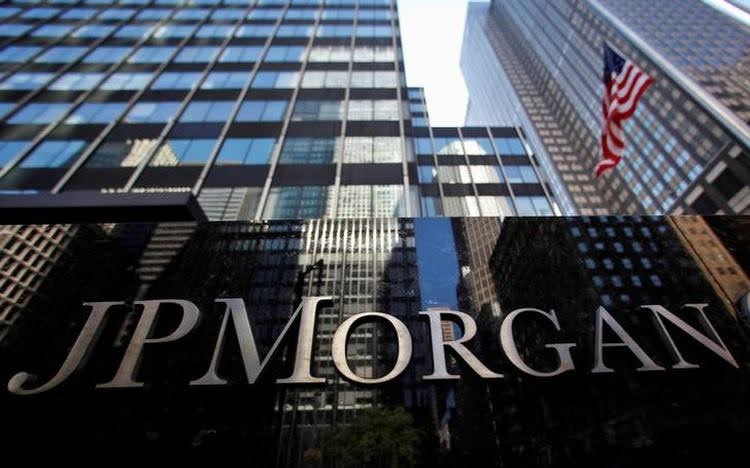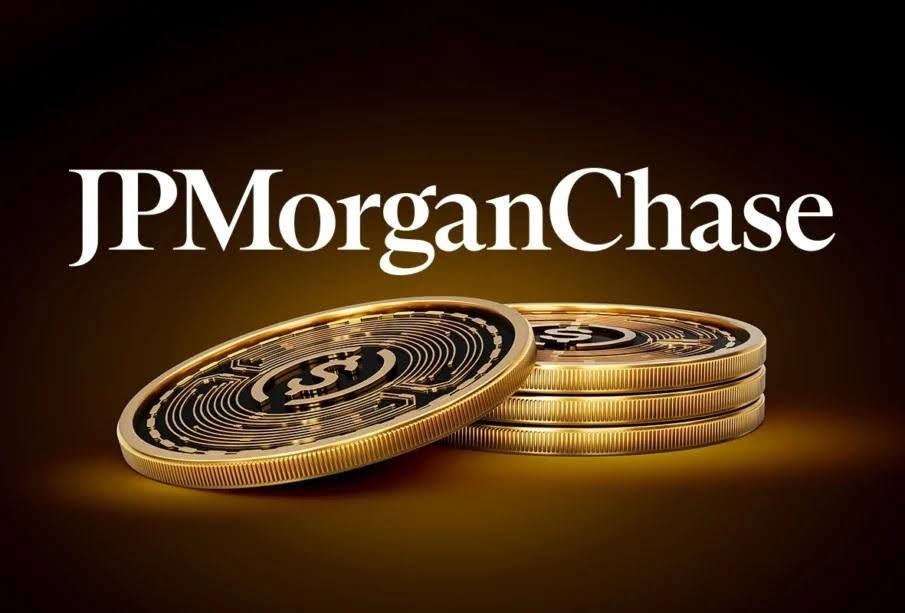JPMorgan Unleashes JPMD on Base: The $4T Banking Giant’s Bold Leap into Public Crypto Rails

Key Takeaways:
- JPMorgan launches JPMD, a permissioned USD deposit token for institutional clients, on Coinbase’s Base blockchain.
- JPMD represents real bank deposits—a first on public infrastructure—enabling near-instant, 24/7 institutional payments.
- The launch signals Wall Street’s growing embrace of public blockchains, setting the stage for scalable, regulated on-chain banking.
JPMorgan, a colossal financial institution, marks its entry into public crypto rails with a jaw-dropping release; JPMD is a deposit-backed digital coin issued on its Kinexys platform that has gone live on Base, Ethereum Layer 2, which was brought about by Coinbase. Targeting only institutional clients, the token combines traditional banking infrastructure with the real-time functions of blockchain technology.

Read More: JPMorgan Opens Bitcoin Access to Clients Amid $42B Crypto ETF Surge—but With a Catch
JPMorgan’s Onchain Banking Begins
JPMD is not just another stablecoin. Unlike USDT or USDC, which are backed by reserves like U.S. Treasuries, JPMD is a direct claim to JPMorgan-held deposits. This means that holders have the potential to make interest on it, and to be protected by deposit insurance — a level of regulatory comfort and integration that’s all too uncommon in crypto.
Base – which is recognized for super low fees and less than one-second transactions – was selected to carry this institutional grade project. The blockchain confirmed the collaboration on June 17, stating:
“J.P. Morgan is bringing banking onchain. Kinexys by Jpmorgan is launching JPMD, a USD deposit token for institutional clients, on Base. It will be the first token of its kind on a public blockchain, enabling fast, secure, 24/7 money movement between trusted parties.”
This marks the first time a global banking leader issues a deposit token on a public blockchain, moving beyond private enterprise chains into the decentralized world.
What Is JPMD and Why It Matters
Redefining Stable Value on Public Chains
Unlike conventional stablecoins, JPMD is deeply embedded within the fractional banking system. It inherits the features of commercial bank money — an asset class that accounts for over 90% of circulating U.S. dollars, according to JPMorgan’s internal research.
The implications are massive:
- Real-time settlements: Transfers that usually take days via SWIFT or ACH can now be finalized in seconds.
- Regulatory clarity: As a bank-issued token, JPMD fits into existing financial compliance frameworks.
- Liquidity efficiency: Institutional clients gain access to liquidity without needing to rely on volatile crypto collateral.
“This is not just another coin,” said Naveen Mallela, Global Co-Head of Kinexys by JPMorgan. “It’s the first time commercial bank money, in tokenized form, is going public.”
Why Base? Strategic Alignment with Layer 2 Tech
JPMorgan’s choice to deploy on Base, Coinbase’s Ethereum Layer 2, is more than symbolic. It signals a broader shift in institutional blockchain strategy. Base enables:
- Sub-cent fees — allowing micro and high-frequency settlements.
- Optimism’s Superchain architecture — promising seamless interoperability with other scaling solutions.
- Regulatory proximity — via Coinbase, a publicly listed U.S. exchange with strong compliance track records.
Base bolsters its standing rather impressively in Layer 2 fray against behemoths Arbitrum and Optimism thereby possibly drawing in more high-grade institutional apps.

Read More: Coinbase CEO’s Crypto Regulatory Meetup in London – What’s Up Next?
A Broader Institutional Trend
JPMorgan’s latest blockchain endeavor JPMD has cleared over $2 billion daily on its proprietary platform Kinexys formerly dubbed JPM Coin. But JPMD’s presence on Base (as opposed to in the private Onyx network) is a public deployment and symbolizes a future of transparency and access.
Other financial institutions are also making similar moves:
- Bank of America and DTCC have launched blockchain trials for settlement and clearing.
- BlackRock’s Bitcoin ETF (IBIT) has attracted massive inflows, partly facilitated by JPMorgan’s offering of loans against spot crypto ETF holdings.
- JPMorgan representatives have reportedly met with Donald Trump’s Crypto Task Force to explore the migration of capital markets activity to public chains.
These developments underscore a growing consensus: blockchain is not just for crypto natives anymore—it’s being actively embraced by the world’s largest financial actors.
Trademark Filing Suggests Long-Term Vision
On June 16, JPMorgan filed a trademark for “JPMD,” covering:
- Digital asset trading
- Custody services
- Real-time token transfers
- Payment processing infrastructure
This signals a multi-year roadmap for JPMD, likely involving:
- Expansion to multi-currency tokens
- Cross-border payments
- Automated liquidity management solutions
While the current pilot is restricted to a small group of institutional users, broader access is expected, pending regulatory greenlights.
Could JPMD Spur a Base Ecosystem Boom?
Though JPMD is not tradable by retail users, its presence may catalyze growth across the Base blockchain ecosystem, which is already home to a range of projects — from DeFi protocols to meme coins like Brett and Degen.
With institutional capital flowing into Base, tokenized equities and compliant crypto financial products could soon follow. Coinbase, in fact, is already seeking SEC approval to offer tokenized stocks, which are likely to launch on Base. If successful, this could create a pipeline of real-world assets (RWAs) on public blockchains.
Deposit Tokens: The Institutional Alternative to Stablecoins
Deposit tokens like JPMD could become the preferred stable-value instrument for institutional blockchain participants. Compared to conventional stablecoins:
| Feature | Stablecoins (USDC, USDT) | Deposit Tokens (JPMD) |
| Backed by | Treasuries, cash | Commercial bank deposits |
| Yield | None (usually) | Interest-bearing (potentially) |
| Regulatory clarity | Limited | High (under bank laws) |
| Redemption rights | Varies | Stronger, via bank relationship |
This model aligns with regulatory frameworks and preserves access to traditional financial safety nets—especially important as governments worldwide tighten scrutiny on unregulated stablecoin issuers.
The post JPMorgan Unleashes JPMD on Base: The $4T Banking Giant’s Bold Leap into Public Crypto Rails appeared first on CryptoNinjas.


